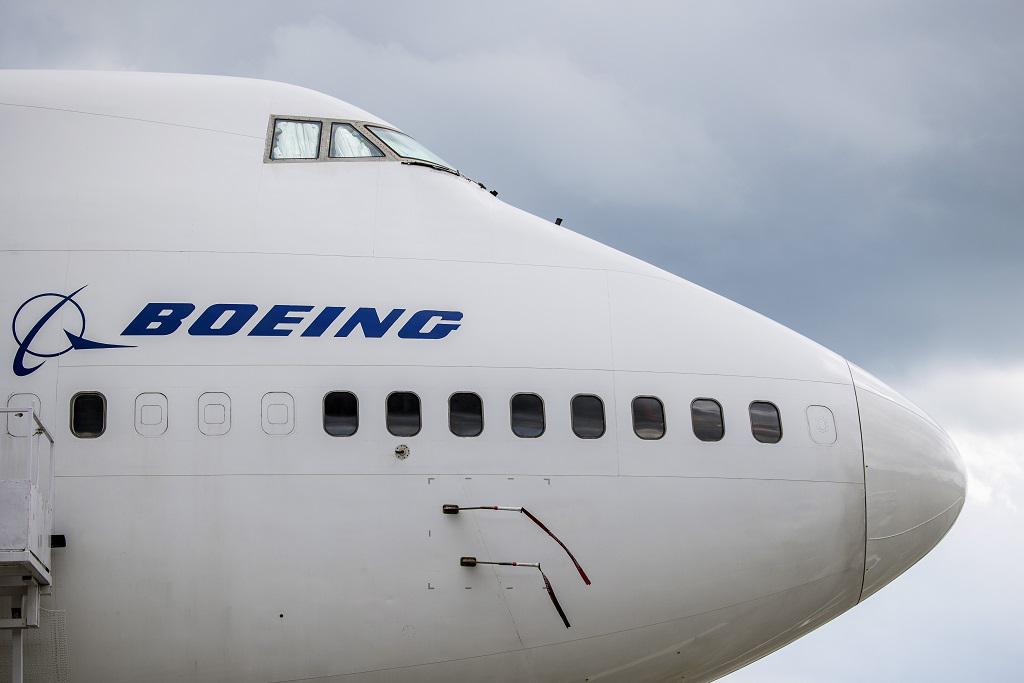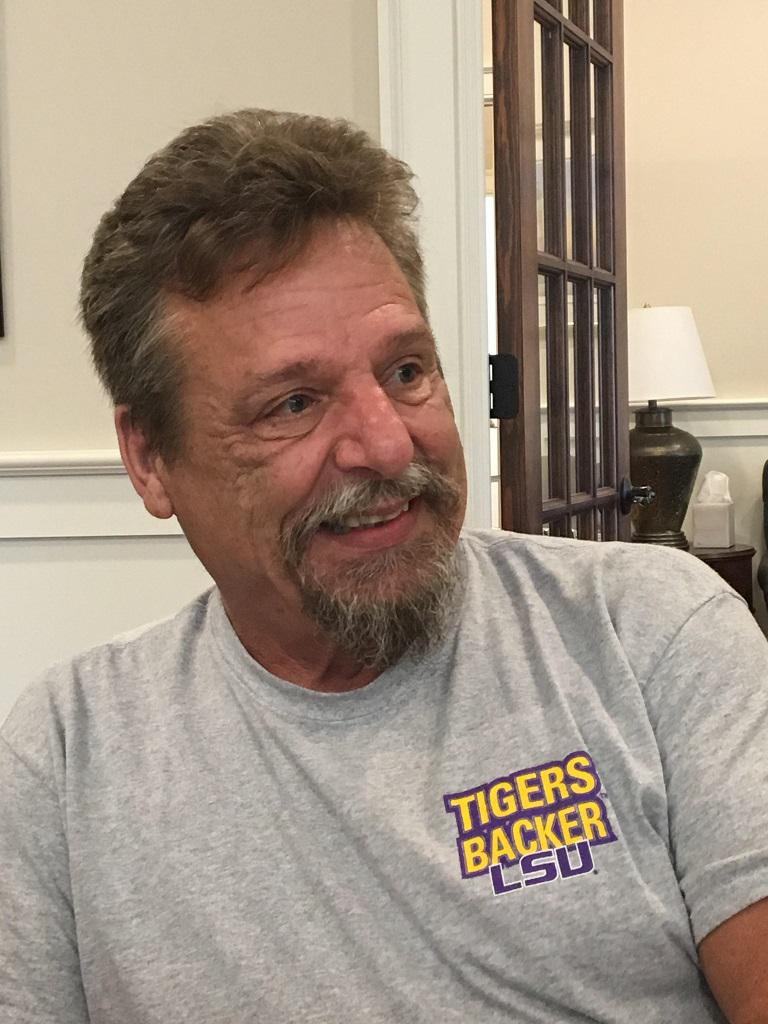28/03/2024 | Prospect | By Maureen Tkacik
What Boeing did to all the guys who remember how to build a plane

A Boeing Dreamlifter sits on the tarmac at their campus in North Charleston, South Carolina, May 30, 2023.
John Barnett had one of those bosses who seemed to spend most of his waking hours scheming to inflict humiliation upon him. He mocked him in weekly meetings whenever he dared contribute a thought, assigned a fellow manager to spy on him and spread rumors that he did not play nicely with others, and disciplined him for things like “using email to communicate” and pushing for flaws he found on planes to be fixed.
“John is very knowledgeable almost to a fault, as it gets in the way at times when issues arise,” the boss wrote in one of his withering performance reviews, downgrading Barnett’s rating from a 40 all the way to a 15 in an assessment that cast the 26-year quality manager, who was known as “Swampy” for his easy Louisiana drawl, as an anal-retentive prick whose pedantry was antagonizing his colleagues. The truth, by contrast, was self-evident to anyone who spent five minutes in his presence: John Barnett, who raced cars in his spare time and seemed “high on life” according to one former colleague, was a “great, fun boss that loved Boeing and was willing to share his knowledge with everyone,” as one of his former quality technicians would later recall.
But Swampy was mired in an institution that was in a perpetual state of unlearning all the lessons it had absorbed over a 90-year ascent to the pinnacle of global manufacturing. Like most neoliberal institutions, Boeing had come under the spell of a seductive new theory of “knowledge” that essentially reduced the whole concept to a combination of intellectual property, trade secrets, and data, discarding “thought” and “understanding” and “complex reasoning” possessed by a skilled and experienced workforce as essentially not worth the increased health care costs. CEO Jim McNerney, who joined Boeing in 2005, had last helmed 3M, where management as he saw it had “overvalued experience and undervalued leadership” before he purged the veterans into early retirement.
“Prince Jim”—as some long-timers used to call him—repeatedly invoked a slur for longtime engineers and skilled machinists in the obligatory vanity “leadership” book he co-wrote. Those who cared too much about the integrity of the planes and not enough about the stock price were “phenomenally talented assholes,” and he encouraged his deputies to ostracize them into leaving the company. He initially refused to let nearly any of these talented assholes work on the 787 Dreamliner, instead outsourcing the vast majority of the development and engineering design of the brand-new, revolutionary wide-body jet to suppliers, many of which lacked engineering departments. The plan would save money while busting unions, a win-win, he promised investors. Instead, McNerney’s plan burned some $50 billion in excess of its budget and went three and a half years behind schedule.
Swampy belonged to one of the cleanup crews that Boeing detailed to McNerney’s disaster area. The supplier to which Boeing had outsourced part of the 787 fuselage had in turn outsourced the design to an Israeli firm that had botched the job, leaving the supplier strapped for cash in the midst of a global credit crunch. Boeing would have to bail out—and buy out—the private equity firm that controlled the supplier. In 2009, Boeing began recruiting managers from Washington state to move east to the supplier’s non-union plant in Charleston, South Carolina, to train the workforce to properly put together a plane.
Boeing was in a perpetual state of unlearning all the lessons it had absorbed over a 90-year ascent to the pinnacle of global manufacturing.
But after the FAA cleared Boeing to deliver its first 787s to customers around the end of 2011, one of Swampy’s old co-workers says that McNerney’s henchmen began targeting anyone with experience and knowledge for torment and termination. One of Swampy’s closest colleagues, Bill Seitz, took a demotion to go back west. A quality control engineer named John Woods was terminated for insisting inspectors thoroughly document damage and repair performed on composite materials, which were far less resilient than steel. Good machinists and inspectors who wore wristbands in support of a union drive were framed with dubious infractions. “Everyone from Everett started dropping like flies,” remembers a former manager at the plant.
“There’s a form we all had to sign that says you take responsibility for anything that goes wrong, and it states pretty clearly that if something happens to a plane because of something you did wrong, you can face a major fine or jail time for that,” the manager recalled. “The Everett managers took that seriously. Charleston leadership did not.”
The bosses hit Swampy with a new initiative called “Multi-Function Process Performer,” through which quality inspectors were directed to outsource 90 percent of their duties to the mechanics they were supposed to be supervising. This was supposed to speed up production and save Boeing millions once it successfully shed the thousands of inspectors it intended to axe. Swampy believed relying on mechanics to self-inspect their work was not only insane but illegal under the Federal Aviation Administration charter, which explicitly required quality inspectors to document all defects detected, work performed, and parts installed on a commercial airplane in one centralized database. Swampy knew he was caught in a prisoner’s dilemma. If he went along, he was breaking the law; if he didn’t, whistleblowers who complained about unsafe practices were routinely terminated on grounds of violating the same safety protocols they had opposed violating.
Swampy calculated that it would be a bigger pain for Boeing to fire him for doing the right thing than following orders, so he kept his head down and continued managing his inspectors as though he were back in Everett, taking special care to meticulously record every episode of noncompliance (and nonconformance, which is similar but not identical) he encountered. He documented his discovery that machinists installing floor panels had been littering long titanium slivers into wire bundles and electrical boxes between the floorboards and the cargo compartment ceiling panels, where they risked causing an electrical short. A series of mysterious battery fires had already caused the FAA to ground the 787 for a few months just over a year after the first plane had been delivered. He wrote that 75 out of a package of 300 oxygen masks slated for installation on a plane did not actually pump oxygen. His team compiled a list of 300 defects on a fuselage scheduled for delivery, and he discovered that more than 400 nonconforming aircraft parts had gone missing from the defective parts cage and likely been installed on planes illegally and without documentation, by managers and mechanics desperate to get them out the door.

John Barnett worked for Boeing for more than 30 years as a quality inspector and manager.
Few quality managers were as stubborn as Swampy. A Seattle Times story detailed an internal Boeing document boasting that the incidence of manufacturing defects on the 787 had plunged 20 percent in a single year, which inspectors anonymously attributed to the “bullying environment” in which defects had systematically “stopped being documented” by inspectors. They weren’t fooling customers: Qatar Airways had become so disgusted with the state of the planes it received from Charleston that it refused to accept them, and even inspired the Qatar-owned Al Jazeera to produce a withering documentary called Broken Dreams, in which an employee outfitted with a hidden camera chitchatted with mechanics and inspectors about the planes they were producing. “They hire these people off the street, dude … fucking flipping burgers for a living, making sandwiches at Subway,” one mechanic marveled of his colleagues; another regaled the narrator with tales of co-workers who came to work high on “coke and painkillers and weed” because no one had ever had a urine test. Asked if they would fly the 787 Dreamliner; just five of 15 answered yes, and even the positive responses did Boeing no favors: “I probably would, but I have kind of a death wish, too.”
The day after Broken Dreams premiered, Swampy got an email informing him that he’d been put on a 60-day corrective action plan four weeks earlier. His alleged offense constituted using email to communicate about process violations; the HR file noted, fictitiously, that his boss had discussed his “infraction” with him earlier.
Swampy was no fool. “Leadership wants nothing in email so they maintain plausible deniability,” he wrote in the “comments” space on his corrective action plan paperwork. “It is obvious leadership is just looking for items to criticize me on so I stop identifying issues. I will conform!” He immediately applied for a job on the graveyard shift, whose supervisor promised the gig would go to the manager with the most seniority on the Final Assembly team. But the job went to a manager who had transferred to Final Assembly all of a week earlier, which is when Swampy began to realize he’d been institutionally blackballed from the only company he’d ever worked for.
He got two more internal job offers rescinded after that, including one from a group that was literally desperate for someone with Barnett’s breadth of experience. “They didn’t care how bad I wanted him,” the senior manager told one of Swampy’s friends. “They said John Barnett is not going anywhere.”
Finally, in early 2017 Swampy happened upon a printout of a list of 49 “Quality Managers to Fire.” The name John Barnett was number one. Swampy decided to go on a medical leave of absence, which turned into early retirement on March 1. He called a labor lawyer he knew from a colleague’s case, and together they began the seemingly unending process of filing an aviation whistleblower complaint detailing his seven years at the Charleston plant. It made him sick to think that the value of his Boeing shares had tripled over the same period during which he’d watched the company get so comprehensively dismantled. But it was downright surreal to watch the stock price nearly triple once more during the two years after he left the company.
Nine days after the stock reached its high of $440, a brand-new 737 MAX dove into the ground near Addis Ababa, Ethiopia, at nearly 800 miles per hour, killing 157 people on board, thanks to a shockingly dumb software program that had programmed the jets to nose-dive in response to the input from a single angle-of-attack sensor. The software had already killed 189 people on a separate 737 MAX in Indonesia, but Boeing had largely deflected blame for that crash by exploiting the island nation’s reputation for aviation laxity. Now it was clear Boeing was responsible for all the deaths.
Swampy had no firsthand experience with the 737 MAX, but it was obvious that the ethos that drove the 787 plant had poisoned that program as well. He began sharing his story in media interviews, and soon the Department of Justice, which had opened a criminal investigation into the MCAS flight control system crashes that quickly widened to encompass the Dreamliner program, came calling as well.
While the criminal probe ultimately shriveled into one of the most pathetic plea bargains in the history of American justice, something shifted within the FAA. Boeing had quietly assumed many of the roles traditionally played by its primary regulator, an arrangement that was ethically absurd, though in practice it probably worked better than being regulated by an agency full of underpaid bureaucrats desperate to ingratiate themselves to Boeing. (Swampy’s best friend and later wife Diane Johnson worked at Boeing as an FAA liaison.) Most of the Boeing employees who worked in quasi-regulatory roles were like Swampy, terrified of anything going wrong on a plane they had inspected and deeply skeptical of their bosses, who seemed unconcerned about the consequences.
Amid the MAX grounding, the FAA began to take a closer look at the 787 program that was the subject of so many complaints from workers and airlines. The company had campaigned the FAA heavily to approve a “random sampling” method of inspecting the precision of the shims it cut to connect various pieces of the plane together; a closer look revealed the shims were not as precisely sized as the company had boasted. Eight planes were immediately grounded, and the agency forced Boeing to halt deliveries pending further investigation. Weeks stretched into years as nonconformances and noncompliances piled up; “Boeing Looked for Flaws in Its Dreamliner and Couldn’t Stop Finding Them,” one headline summarized.
Boeing had quietly assumed many of the roles traditionally played by its primary regulator, an arrangement that was ethically absurd.
In December 2022, Aviation Week produced a helpful diagram mapping what sections of the plane had caused auditors the biggest headaches. Every single section, from the tip of the nose to the horizontal stabilizers, was marked up with red arrows. In 2023, deliveries were halted in January, February, and again in August over problems with the shimming, the horizontal stabilizer, and God knows what else. Swampy, and hundreds of others who had blown the whistle on Boeing’s managerial nihilism, had been thoroughly vindicated. But it was too late. There were no more cleanup crews left at Boeing; too much knowledge had been drained from the company.
“For every new plane you put up into the sky there are about 20,000 problems you need to solve, and for a long time we used to say Boeing’s core competency was piling people and money on top of a problem until they crushed it,” says Stan Sorscher, a longtime Boeing physicist and former officer of the Society of Professional Engineering Employees in Aerospace (SPEEA), the labor union representing Boeing engineers. But those people are gone.
Sorscher has warned Boeing management for decades now of the catastrophic effects of the brain drain inflicted by its war on “brilliance.” He says McDonnell Douglas managers published a statistical analysis in 1997 gauging productivity against the average seniority of managers across various programs that found that greener workforces were substantially less productive, which he found to be a “mirror image” of a kind of “rule of thumb” within Boeing that held that every Boeing employee takes four years to become “fully productive.” But the average employee assigned to the 737 program has been at Boeing just five years, according to a longtime Boeing executive who is involved in various efforts to save the company; for comparison’s sake, he says the average employee assigned to the 777 program had between 15 and 20 years under their belt. The typical engineer or machinist assigned to the task of fixing Boeing’s 20,000 problems has never known a Boeing that wasn’t a five-alarm dumpster fire.
There’s a terrifying visual representation of this: the satellite view of the Moses Lake Municipal Airport in an arid stretch of Washington east of Seattle, or the Southern California Logistics Airport in Victorville, California, where hundreds of Boeing 737 MAXes sit in abandoned parking lots waiting for someone to fix them so they can finally be delivered. Meanwhile, pieces are flying off the Boeing planes actually in use at an alarming rate, criminal investigations are under way, and another in a long line of stock-conscious CEOs is stepping down. Boeing’s largest union, the Machinists, is trying to snag a board seat because, in the words of its local president, “we have to save this company from itself.”
SPEEA has demanded, understandably, that the board choose an aerospace engineer as its next CEO. But there are few signs that will happen: None of the names floated thus far for the spot have been aerospace engineers, and the shoo-in for the position, GE’s Larry Culp, is not an engineer at all.
By now you know what became of Swampy: He was found dead a few weeks ago with a gunshot wound to his right temple, “apparently” self-inflicted, on what was meant to be the third day of a three-day deposition in his whistleblower case against his former employer; his amended complaint, which his lawyer released last week, is the basis for much of this story.
It is worth noting here that Swampy’s former co-workers universally refuse to believe that their old colleague killed himself. One former co-worker who was terrified of speaking publicly went out of their way to tell me that they weren’t suicidal. “If I show up dead anytime soon, even if it’s a car accident or something, I’m a safe driver, please be on the lookout for foul play.” Swampy’s wife Diane, who worked at Boeing for 28 years, died of brain cancer at age 60 in late 2022.
Discussing Swampy’s death and the whistleblower lawsuit he left behind, the longtime former Boeing executive told me, “I don’t think one can be cynical enough when it comes to these guys.” Did that mean he thought Boeing assassinated Swampy? “It’s a top-secret military contractor, remember; there are spies everywhere,” he replied. More importantly, he added, “there is a principle in American law that there is no such thing as an accidental death during the commission of a felony. Let’s say you rob a bank and while traveling at high speed in the getaway you run down a pedestrian and kill them. That’s second-degree murder at the very least.”
Maureen Tkacik is investigations editor at the Prospect and a senior fellow at the American Economic Liberties Project.

